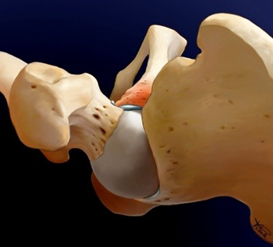Introduction: Femoroacetabular impingement (FAI) is recognised as a cause of hip and groin pain in young individuals. With the high prevalence of radiographic FAI in asymptomatic individuals, subjective and objective findings should inform treatment decisions. Therefore, the use of quantifiable methods to determine pain location and distribution in FAI is required. This study aimed to describe the location and distribution of pain in adults with symptomatic FAI, using a digital pain platform.
Methods: Twenty-five adults (13 female), aged 33.5 (8.7) years with symptomatic FAI drew their pain on a high resolution male or female body chart displayed on a tablet computer. Pain area (expressed as pixels) was extracted using the Navigate Pain software (Aalborg University), which directly quantifies pain area, distribution and location. Laterality (uni- vs. bilateral), symmetrical presentation of pain, average pain intensity and worse pain side were reported. Between group differences were evaluated with Wilcoxon signed rank test and correlations with Spearman rank correlation coefficient.
Results: In all 25 FAI patients, pain was reported in the anterior hip region, whereas 7/13 women and 5/12 men also reported pain posteriorly. Fifteen individuals displayed bilateral and 12/15 displayed symmetrical pain patterns. Evaluation of the anterior hip and groin region revealed no difference in total area of pain between right (6792 ± 1065) and left (6626 ± 1202) sides. However, total pain over the posterior hip was less for the left (5171 ± 1044) when compared to the right (8141 ± 1422) side (Z = -2.1, p = 0.036). For those presenting with bilateral pain, there was no difference in the total (anterior + posterior) pain area between the most severe and less severe side (Z = -0.471, p = 0.638). Frequency map overlays revealed considerable variation in pain location and distribution, however, the groin area in 8/12 men and the anterior hip in 7/13 females were the most commonly indicated area of pain. No correlation existed between average pain intensity and total pain area (ρ=.157, p = 0.45) or the size of anterior hip/groin area (ρ=.142, p = 0.49).
Conclusions: This study provides preliminary information regarding a quantifiable method that can be used to assess pain location and distribution in symptomatic FAI. In individuals with symptomatic FAI pain distribution was highly variable and no clear relationship existed between pain intensity and total pain area.

